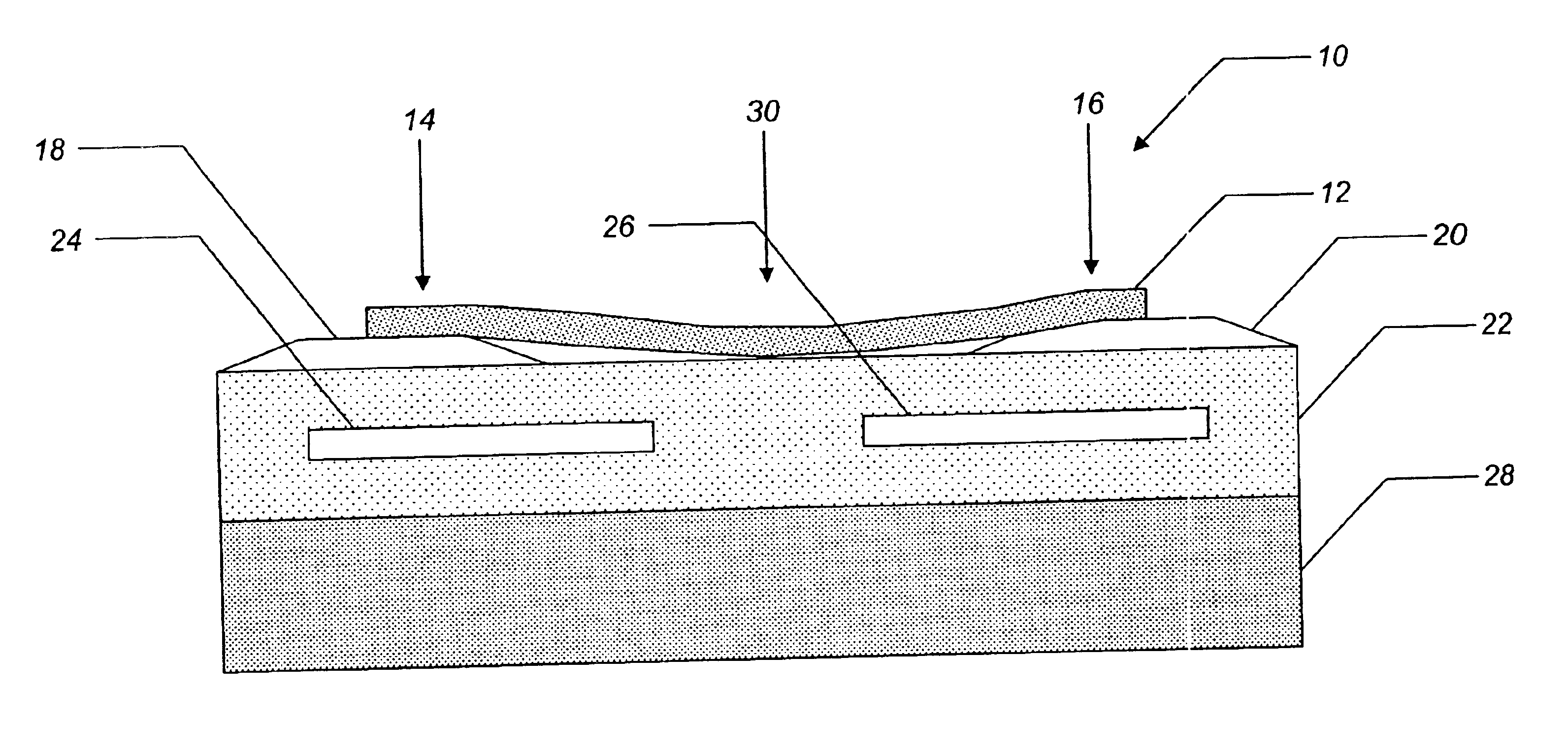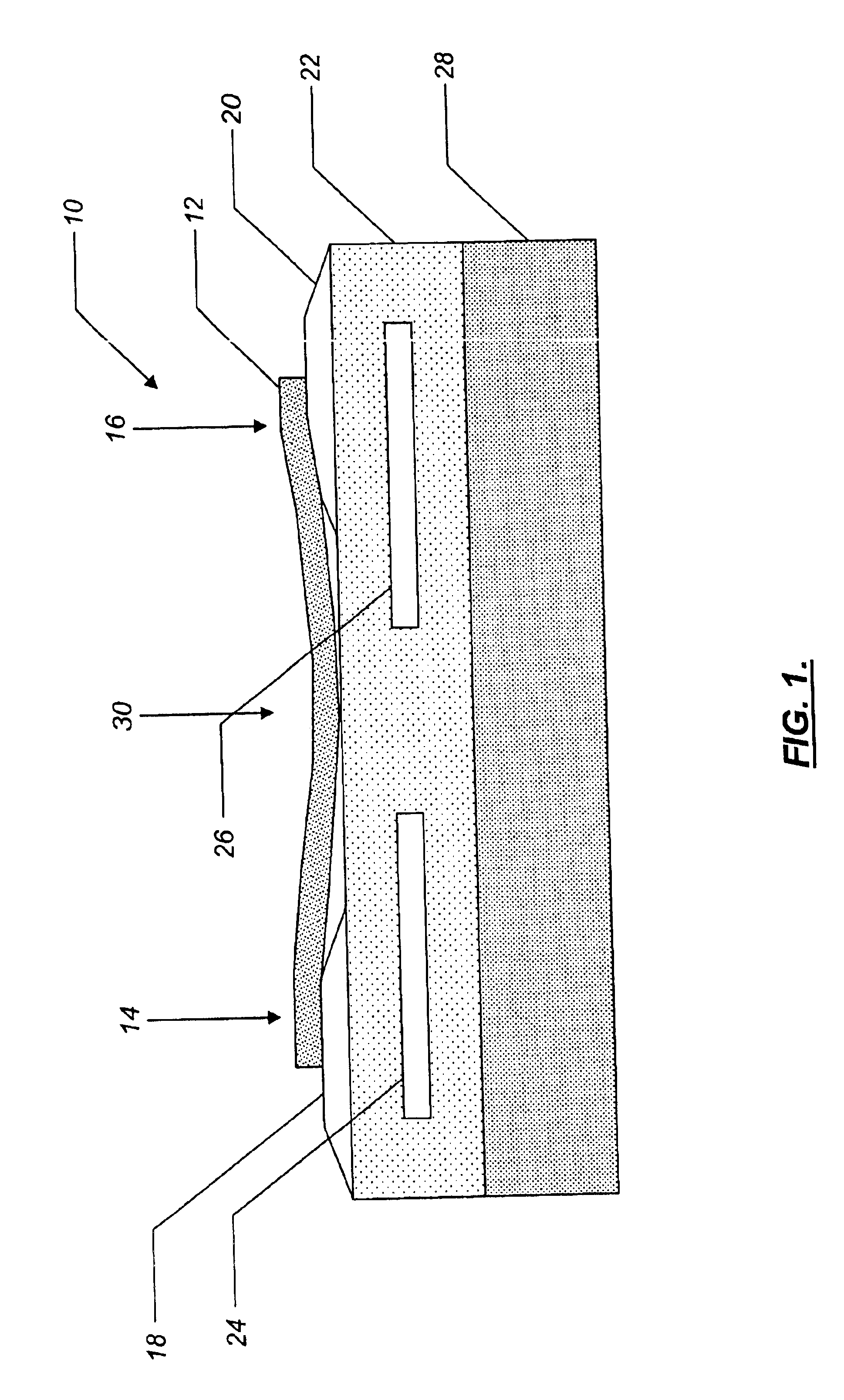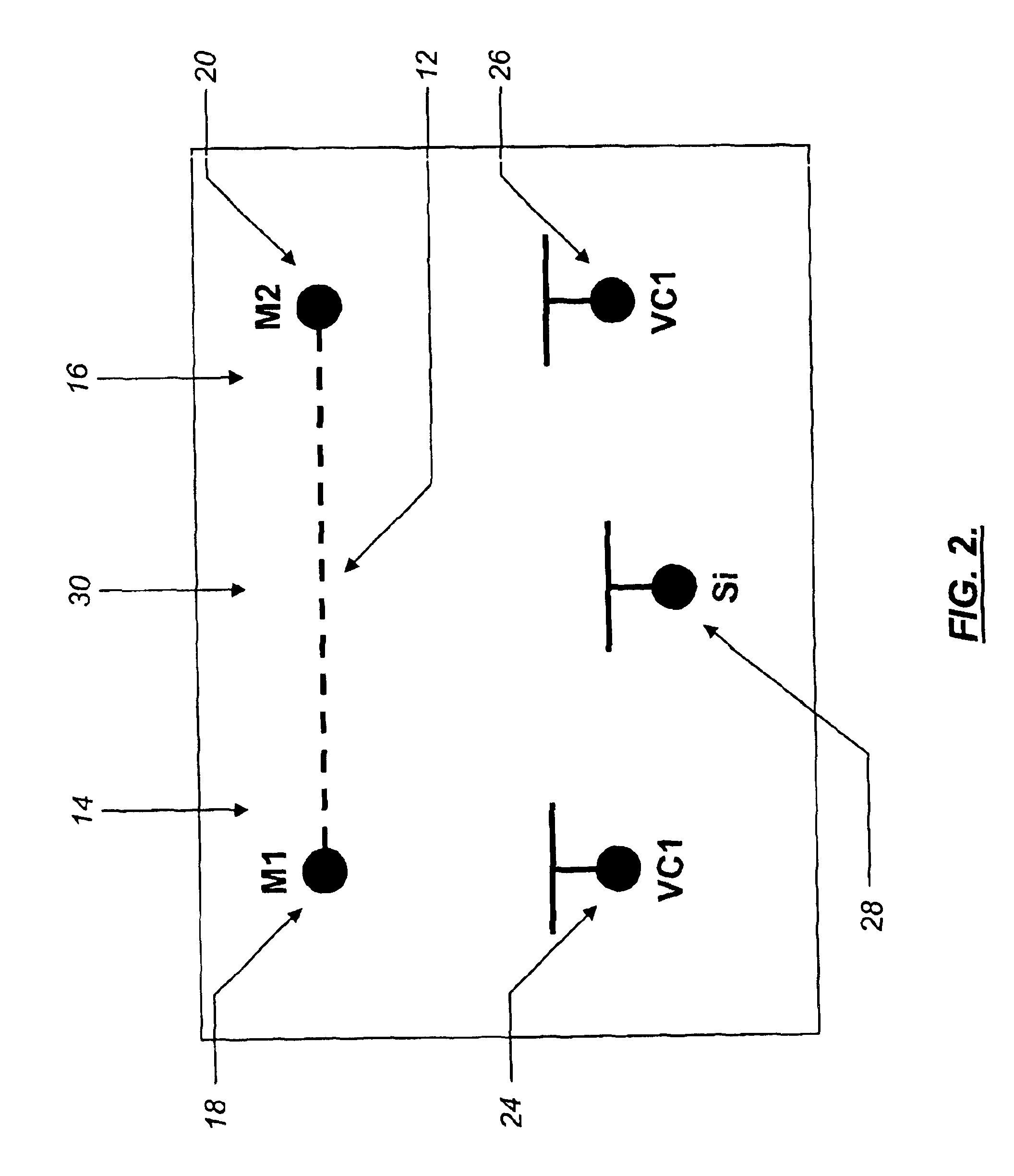Method for forming an electrostatically-doped carbon nanotube device
a carbon nanotube and electrostatic technology, applied in nanoinformatics, solid-state devices, instruments, etc., can solve problems such as reducing the performance characteristics of nano-scale electronic devices, and achieve the effect of improving the performance characteristics
- Summary
- Abstract
- Description
- Claims
- Application Information
AI Technical Summary
Benefits of technology
Problems solved by technology
Method used
Image
Examples
Embodiment Construction
[0017]The present invention provides a method and associated structure for forming an electrostatically-doped carbon nanotube device having well characterized p-type regions and n-type regions, allowing for the creation of nanoscale electronic devices, such as light-emitting diodes (“LEDs”) and the like, with enhanced performance characteristics. More specifically, the present invention provides for the use of a plurality of doping electrodes that are decoupled from a plurality of bias electrodes. Thus, the doping of a carbon nanotube may be finely tuned by varying the bias of each of the plurality of bias electrodes. Advantageously, the method and associated structure of the present invention are capable of providing a carbon nanotube having a P-N junction, a P-I-P junction, a P-I-N junction, an N-I-P junction, an N-I-N junction, a P-N-P junction or an N-P-N junction.
[0018]Referring to FIG. 1, in one embodiment of the present invention, a structure for forming an electrostatically-...
PUM
| Property | Measurement | Unit |
|---|---|---|
| distance | aaaaa | aaaaa |
| distance | aaaaa | aaaaa |
| distance | aaaaa | aaaaa |
Abstract
Description
Claims
Application Information
 Login to View More
Login to View More - R&D
- Intellectual Property
- Life Sciences
- Materials
- Tech Scout
- Unparalleled Data Quality
- Higher Quality Content
- 60% Fewer Hallucinations
Browse by: Latest US Patents, China's latest patents, Technical Efficacy Thesaurus, Application Domain, Technology Topic, Popular Technical Reports.
© 2025 PatSnap. All rights reserved.Legal|Privacy policy|Modern Slavery Act Transparency Statement|Sitemap|About US| Contact US: help@patsnap.com



